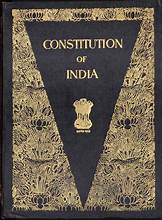Rudrakshi Sharma, a second year student from Symbiosis Law School, Noida has written this Article on”Difference between Bailable and Non-Bailable Offences”.
Introduction
The Indian criminal justice system classifies criminal offenses into various categories based on severity and the punishment prescribed under the law. One such classification is bailable and non-bailable offenses. Understanding the distinction between the two is crucial for all stakeholders involved in the criminal justice system, including the police, lawyers, judges, and the accused.
The Indian Criminal Procedure Code (CrPC)[1] defines bailable and non-bailable offenses, and the classification of offenses into the two categories determines the procedures to be followed during the arrest, detention, and trial of the accused. While bailable offenses allow for quick release of the accused on bail, non-bailable offenses require the accused to apply for bail in court, where the court considers various factors before granting or denying bail. The bail process is crucial for ensuring the accused is available for trial and does not flee from justice while protecting the victim’s and society’s interests.
Bailable Offenses
Bailable offenses are less severe offenses, and the accused has the right to be released on bail immediately after arrest. The accused can be released on a personal bond or sureties. The court may impose conditions such as surrendering the passport or reporting to the police regularly. The bail process in bailable offenses is relatively straightforward. The accused can be released from custody within a few hours of arrest. Providing bail in bailable offenses aims to ensure that the accused is available for trial and does not flee from justice while also protecting the accused’s rights.
Bailable offenses include simple assault, mischief, theft, and criminal breach of trust, with punishment ranging from a fine to imprisonment for up to three years. In case of bailable offenses, the police officer arresting the accused has to inform the accused of their right to bail and produce them before the magistrate within 24 hours of arrest. The magistrate may then grant bail if the accused furnishes a personal bond or sureties and complies with the conditions imposed by the court. If the accused cannot furnish the bond or sureties, they can be sent to judicial custody. The right to bail in bailable offenses is a fundamental right guaranteed under the Indian Constitution. It is a crucial aspect of the criminal justice system.
Non-Bailable Offenses
Non-bailable offenses are more severe offenses, and the accused has to apply for bail in court. The court considers various factors before granting or denying bail. It include the nature and severity of the offense, the punishment prescribed under the law, and the likelihood of the accused tampering with evidence or fleeing from justice. The bail process in non-bailable offenses is more rigorous and time-consuming than in bailable offenses. The objective of the bail provision in non-bailable offenses is to ensure that the accused does not interfere with the administration of justice and that the accused is available for trial.
Examples of non-bailable offenses include murder, rape, kidnapping, and terrorism, with punishment ranging from life imprisonment to the death penalty. In case of non-bailable offenses, the police officer arresting the accused has to produce them before the magistrate within 24 hours of arrest. The accused has to apply for bail in court. The court may grant or deny bail based on various factors. The court may also impose conditions such as surrendering the passport or reporting to the police regularly. The right to bail in non-bailable offenses is not absolute. The court may deny bail if there are compelling reasons to do so. The trial procedures in non-bailable offenses are more complex and time-consuming. The accused has to present a more robust defense to prove their innocence.
Differences between Bailable and Non-Bailable Offenses
The primary difference between bailable and non-bailable offenses lies in the bail provisions available to the accused. In bailable offenses, the accused has a right to be released on bail immediately after arrest. While in non-bailable offenses, the accused has to apply for bail in court. The court considers various factors before granting or denying bail, including the nature and severity of the offense, the punishment prescribed under the law, and the likelihood of the accused tampering with evidence or fleeing from justice. This means the bail process in non-bailable offenses is more rigorous and time-consuming than in bailable offenses.
Another significant difference between bailable and non-bailable offenses is the punishment prescribed under the law. Bailable offenses are generally less severe, and the punishment prescribed under the law is less severe. For example, simple assault, mischief, theft, and criminal breach of trust are bailable offenses, with punishment ranging from a fine to imprisonment for up to three years. In contrast, non-bailable offenses are more severe, and the punishment prescribed under the law is more severe. For example, murder, rape, kidnapping, and terrorism are non-bailable offenses, with punishment ranging from life imprisonment to the death penalty.
Lastly, the trial procedures for bailable and non-bailable offenses also differ. The trial procedures are relatively simple and straightforward in bailable offenses. The accused can be released on bail immediately after arrest. In contrast, in non-bailable offenses, the trial procedures are more complex. The accused has to apply for bail in court, with the court considering various factors before granting or denying bail. The trial procedures in non-bailable offenses are more rigorous and time-consuming. The accused has to present a more robust defense to prove their innocence.
Legal Procedure for Getting Bail in Bailable Offenses
In bailable offenses, the accused can be released on bail immediately after arrest. The legal procedure of getting bail for bailable offenses is relatively straightforward. Once the accused is arrested, the police officer has to inform the accused of their right to bail and produce them before the magistrate within 24 hours of arrest. The magistrate may then grant bail if the accused furnishes a personal bond or sureties and complies with the conditions imposed by the court.
The accused can apply for bail in court before or after being produced before the magistrate. The accused or their lawyer has to file a bail application stating the grounds for bail and the conditions proposed for bail. The court considers various factors before granting bail, such as the nature and gravity of the offense, the likelihood of the accused absconding or interfering with the investigation, and the strength of the prosecution case. It may grant bail if the court is satisfied that the accused is not a flight risk and will cooperate with the investigation. The court fixes the bail amount, and the accused must furnish a personal bond or sureties to secure release.
Legal Procedure for Getting Bail in Non-Bailable Offenses
In non-bailable offenses, the accused has no automatic right to bail and must apply for bail in court. The legal procedure of getting bail in non-bailable offenses is more rigorous and time-consuming than in bailable offenses. The accused or their lawyer has to file a bail application in court stating the grounds for bail and the conditions proposed for bail. The court considers various factors before granting bail. Such as the nature and gravity of the offense, the punishment prescribed under the law, and the likelihood of the accused tampering with evidence or fleeing from justice.
Also that the court may grant bail if satisfied that the accused is not a flight risk and will cooperate with the investigation. The court may also impose conditions such as surrendering the passport or reporting to the police regularly. The court fixes the bail amount, and the accused must furnish a personal bond or sureties to secure release. In some cases, the court may require the accused to deposit cash as security. If the court denies bail, the accused can apply for bail in the higher courts. The right to bail in non-bailable offenses is not absolute. The court may deny bail if there are compelling reasons to do so.
Different Types of Bails
Bail is a legal procedure that allows an accused person to be released from custody while awaiting trial. Different types of bail are available in India, and each type serves a specific purpose. Let’s take a look at the different types of bail and what they mean:
Regular Bail
Regular bail is the most common bail available to an accused person. It is granted by the court to an accused person in custody. The court may release the accused on bail after considering various factors. The court may impose conditions on bail, such as surrendering the passport or reporting to the police regularly. The accused must furnish a personal bond or sureties to secure release.
Interim Bail
Interim bail is a temporary bail granted by the court when the regular bail application is pending. It is granted briefly until the regular bail application is heard and decided. Interim bail is granted only in exceptional circumstances. Such as when the accused is seriously ill or has to attend to urgent personal matters. The court may impose conditions on the interim bail, such as surrendering the passport or reporting to the police regularly.
Anticipatory Bail
Anticipatory bail is a type the court grants before an arrest is made. It is granted to a person who apprehends arrest in a non-bailable offense. The person has to apply for anticipatory bail stating the grounds for bail and the reasons for apprehending arrest. The court may grant anticipatory bail if satisfied that the person is not a flight risk and will cooperate with the investigation. The court may impose conditions on the anticipatory bail, such as surrendering the passport or reporting to the police regularly.
Transit Bail
Transit bail is a type of bail granted by the court to a person apprehending an arrest in another state or country. The person must file an application for transit bail in the state where the arrest is likely to occur. The court may grant transit bail if satisfied that the person is not a flight risk and will cooperate with the investigation. The transit bail is valid for a limited period. However, the person must surrender to the court with jurisdiction over the offense.
In conclusion, the different types of bail available in India serve a specific purpose and are granted under different circumstances. The court considers various factors before granting bail. Such as the nature and gravity of the offense, the likelihood of the accused absconding or interfering with the investigation, and the strength of the prosecution case. The objective of the bail provision is to ensure that the accused does not interfere with the administration of justice and that the accused is available for trial.
Recent Judgements
Sanjay Kumar Gupta v. State of U.P.[2]
The case was an important decision clarifying the anticipatory bail provisions under Indian law. In this case, the petitioner had applied for anticipatory bail related to fraud and forgery. The High Court rejected the application because the petitioner was not cooperating with the investigation. The petitioner then appealed to the Supreme Court, which upheld the High Court’s decision.
The Supreme Court held that the grant of anticipatory bail is not a matter of right and is subject to certain conditions. The court clarified that anticipatory bail is meant to protect the accused from arrest in cases where the accusation is false or motivated by malice. However, the court also noted that anticipatory bail could not be granted as a matter of course. Also that the court has to consider various factors before granting anticipatory bail. This case underscores the importance of understanding the provisions of anticipatory bail and the need to comply with the conditions set by the court when applying for anticipatory bail.
Sudha Singh v. State of U.P[3], (2021)
The case was a significant decision that dealt with the issue of bail in cases of economic offenses. In this case, the petitioner was accused of embezzlement of funds and had applied for bail. The High Court had rejected her application because she was a flight risk and could influence the witnesses. The petitioner then approached the Supreme Court, which upheld the High Court’s decision.
The Supreme Court held that in economic offenses, the accused’s financial status and influence are relevant factors that the court can consider when deciding bail. The court clarified that the objective of bail is to ensure that the accused person is available for trial and that the administration of justice is not hampered. The court noted that in economic offenses, the accused person’s ability to influence the investigation or tamper with evidence is a valid concern and can be considered by the court when deciding on bail.
This case highlights the importance of considering the specific circumstances of each case when deciding on bail. The court has to consider various factors. Such as the nature of the offense, the accused person’s likelihood of absconding or interfering with the investigation, and the strength of the prosecution case when deciding on bail. The decision, in this case, clarifies the factors that the court can consider in cases of economic offenses and underscores the importance of ensuring that the accused person’s rights are protected while ensuring that the administration of justice is not compromised.
Conclusion
In conclusion, bailable and non-bailable offenses are two different categories of offenses under Indian law. The distinction between them is essential for the judicial process. Bailable offenses are less serious offenses where the accused can secure their release on bail. In contrast, non-bailable offenses are serious offenses where the accused person cannot be released on bail without the court’s permission. The grant of bail in both types of offenses depends on various factors. Such as the nature and gravity of the offense, the likelihood of the accused absconding or interfering with the investigation, and the strength of the prosecution case.
The procedure for obtaining bail in bailable and non-bailable offenses differs significantly. In bailable offenses, the accused can apply for bail immediately after the arrest. The court has to grant bail unless there are exceptional circumstances. In contrast, in non-bailable offenses, the accused has to apply for bail to the court. The court has to consider various factors before granting bail. The bail provision in Indian law is an essential safeguard against wrongful detention and protects the rights of the accused.
In conclusion, the different types of bail available in India serve a specific purpose. The court considers various factors before granting bail. The bail provision ensures that the accused person does not interfere with the administration of justice and that the accused is available for trial. Understanding the differences between bailable and non-bailable offenses is crucial to ensure that the accused person’s rights are protected and that the judicial process is fair and just.
Also Read: Is Prostitution Legal in India? Click Here!
[1] Criminal Code of Procedure, 1973
[2] SCC 2021 SC 26.
[3] SCC 2021 SC 295
![]()







Leave feedback about this